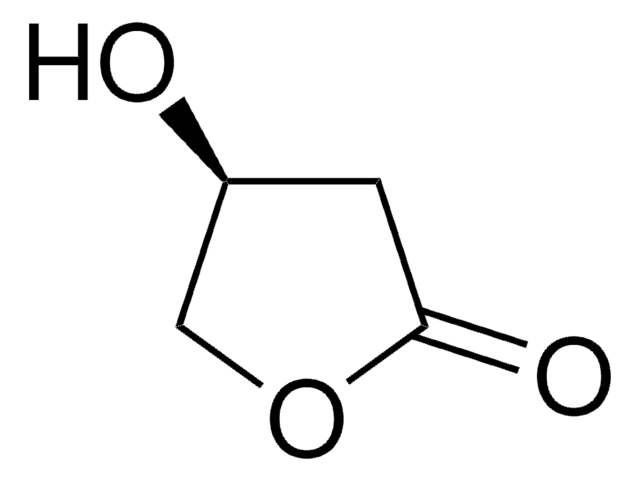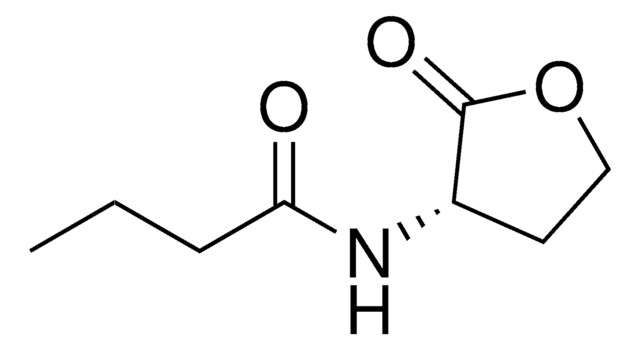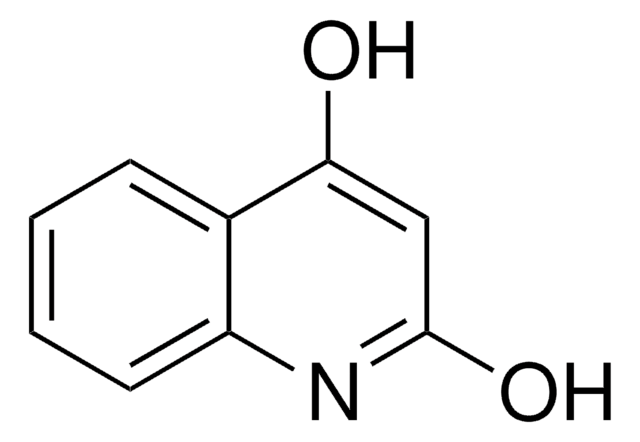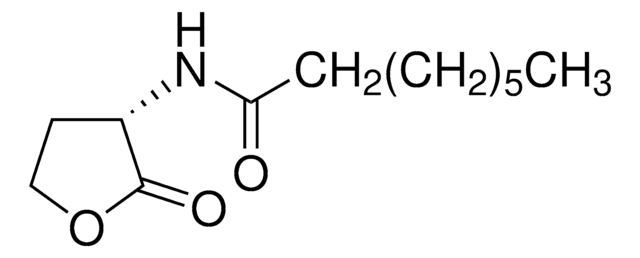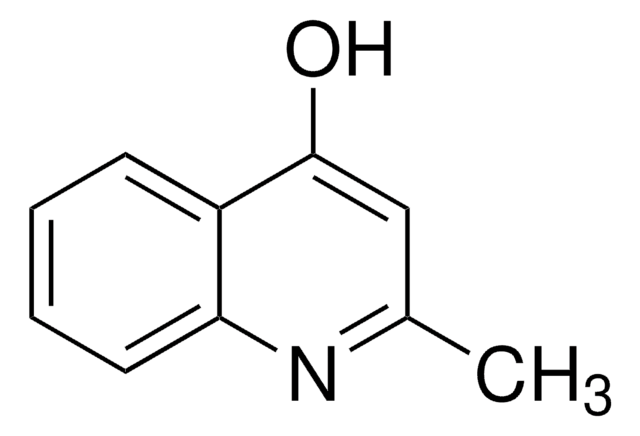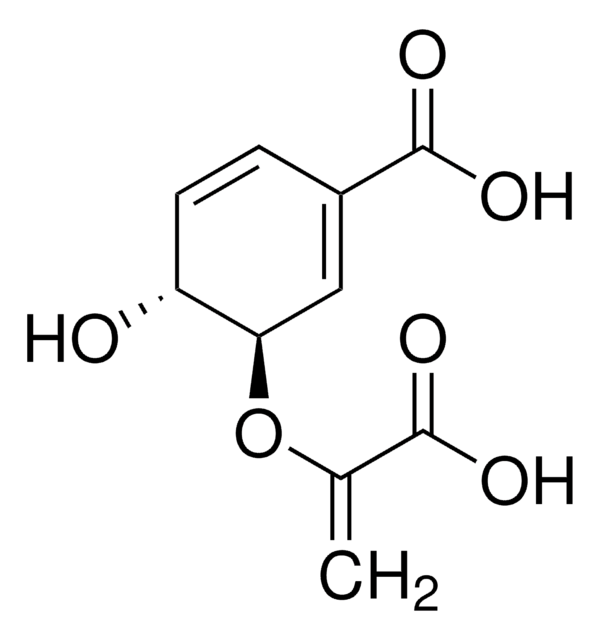94398
2-Heptyl-3-hydroxy-4(1H)-quinolone
≥96.0% (HPLC)
Autenticatiper visualizzare i prezzi riservati alla tua organizzazione & contrattuali
About This Item
Formula empirica (notazione di Hill):
C16H21NO2
Numero CAS:
Peso molecolare:
259.34
Numero MDL:
Codice UNSPSC:
12352005
ID PubChem:
NACRES:
NA.25
Prodotti consigliati
Saggio
≥96.0% (HPLC)
Stato
powder
Temperatura di conservazione
−20°C
Stringa SMILE
CCCCCCCC1=C(O)C(=O)c2ccccc2N1
InChI
1S/C16H21NO2/c1-2-3-4-5-6-11-14-16(19)15(18)12-9-7-8-10-13(12)17-14/h7-10,19H,2-6,11H2,1H3,(H,17,18)
CEIUIHOQDSVZJQ-UHFFFAOYSA-N
Descrizione generale
2-heptyl-3-hydroxy-4-quinolone can function as an intercellular signal.
Applicazioni
Quorum sensing is a signaling system used by bacteria to coordinate activity based upon their population density. The system involves the exchange of signaling molecules among bacteria via cell receptors. Heptyl-3-hydroxy-4(1H)-quinolone (PQS) is a quorum sensing-regulated virulence factor used to induce and study the regulation of virulence genes such as those involved in iron scavenging.
Confezionamento
Bottomless glass bottle. Contents are inside inserted fused cone.
Indicazioni di pericolo
Classi di pericolo
Aquatic Chronic 4
Codice della classe di stoccaggio
11 - Combustible Solids
Classe di pericolosità dell'acqua (WGK)
WGK 3
Punto d’infiammabilità (°F)
Not applicable
Punto d’infiammabilità (°C)
Not applicable
Scegli una delle versioni più recenti:
Possiedi già questo prodotto?
I documenti relativi ai prodotti acquistati recentemente sono disponibili nell’Archivio dei documenti.
I clienti hanno visto anche
Doreen S W Hooi et al.
Infection and immunity, 72(11), 6463-6470 (2004-10-27)
Pseudomonas aeruginosa releases a spectrum of well-regulated virulence factors, controlled by intercellular communication (quorum sensing) and mediated through the production of small diffusible quorum-sensing signal molecules (QSSM). We hypothesize that QSSM may in fact serve a dual purpose, also allowing
Stephen P Diggle et al.
Chemistry & biology, 14(1), 87-96 (2007-01-27)
Pseudomonas aeruginosa produces 2-heptyl-3-hydroxy-4(1H)-quinolone (PQS), a quorum-sensing (QS) signal that regulates numerous virulence genes including those involved in iron scavenging. Biophysical analysis revealed that 2-alkyl-3-hydroxy-4-quinolones form complexes with iron(III) at physiological pH. The overall stability constant of 2-methyl-3-hydroxy-4-quinolone iron(III) complex
E C Pesci et al.
Proceedings of the National Academy of Sciences of the United States of America, 96(20), 11229-11234 (1999-09-29)
Numerous species of bacteria use an elegant regulatory mechanism known as quorum sensing to control the expression of specific genes in a cell-density dependent manner. In Gram-negative bacteria, quorum sensing systems function through a cell-to-cell signal molecule (autoinducer) that consists
Jintae Lee et al.
Microbial biotechnology, 2(1), 75-90 (2009-01-01)
Indole is an extracellular biofilm signal for Escherichia coli, and many bacterial oxygenases readily convert indole to various oxidized compounds including 7-hydroxyindole (7HI). Here we investigate the impact of indole and 7HI on Pseudomonas aeruginosa PAO1 virulence and quorum sensing
Jin-Hyung Lee et al.
FEMS microbiology letters, 329(1), 36-44 (2012-01-19)
The emergence of antibiotic resistance has necessitated new therapeutic approaches for combating persistent bacterial infection. An alternative approach is regulation of bacterial virulence instead of growth suppression, which can readily lead to drug resistance. The virulence of the opportunistic human
Il team dei nostri ricercatori vanta grande esperienza in tutte le aree della ricerca quali Life Science, scienza dei materiali, sintesi chimica, cromatografia, discipline analitiche, ecc..
Contatta l'Assistenza Tecnica.

